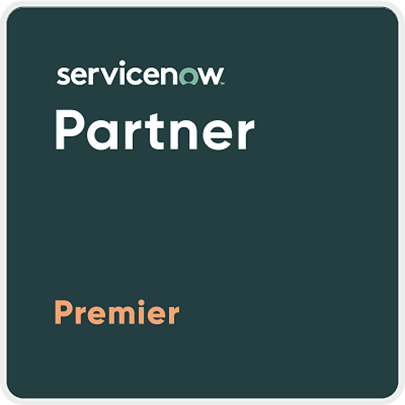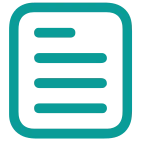Nearly, every organization today has an onboarding program, yet few employees call their onboarding great. The result is that many employers are losing their best people before they barely get started. To add on the cost of finding, hiring, and training is exceptionally high.
Clearly, there’s more to onboarding than “Where do I sit?” and “Which forms and manuals to fill next?” Failing to execute this first impression, HR leaders are constantly bugged with how to overcome employee onboarding challenges.
The good news? HR technology is changing the game. By automating repetitive tasks, improving communication, and personalizing the experience, platform like ServiceNow make onboarding smoother, faster, and more engaging.
Today, to help you out we will discuss the major employee onboarding challenges and how you can escape them with ServiceNow.
Why Employee Onboarding Matters?
Onboarding is one of the most important lifecycle events from an employee journey and for HR leaders and people managers a streamlined onboarding process is vital to achieve.
According to research from Gallup, only 12% of employees strongly agree their organization does a great job of onboarding new employees. From the same research, after experiencing onboarding at their organization, 29% of new hires say that they feel fully prepared and supported to excel in their new role.
Did You Know?
“Employees who strongly agree their onboarding process was exceptional are nearly three times as likely to say they have the best possible job.”
4 Employee Onboarding Challenges holding your organization back
A strong onboarding process is critical for setting new hires up for success. However, many organizations struggle with outdated, inefficient, or fragmented onboarding practices that create frustration and disengagement. Here are the few challenges:
1. New Hire Expectations
Today’s employees expect a seamless and engaging onboarding experience. If the process is outdated or disorganized, it can lead to frustration, lower engagement, and even early turnover. New hires want clear communication, personalized onboarding, and quick access to the tools they need to succeed.
Example: Imagine a new hire Alex, who joins your organization brimming with a lot of expectations for his career. On the first day, Alex is handed a stack of paperwork and left to fill in those for the onboarding process alone. The excitement quickly diminishes, leading to frustration.
Modern employees expect engaging on-boarding experience. A study found that 41% of employers believe that a lack of structured onboarding harms their company.
Why it matters: Failing to meet these expectations can result in early turnover. Alarmingly, 20% of employees quit within the first 45 days of employment, often due to unsatisfactory onboarding experiences.
Pro Tip: Develop a comprehensive onboarding program that includes mentorship, clear communication, and personalized training paths to align with new hire expectations.
2. Manual Processes
Many HR teams still rely on paper forms, spreadsheets, and email threads to manage onboarding. Reliance on manual processes is a significant bottleneck. Eliminating important information to new hires is part and parcel of the onboarding process. These manual processes are time-consuming, prone to errors, and create delays in getting employees up to speed. Automating onboarding tasks can significantly improve efficiency and accuracy.
Example: Your HR team spends countless hours managing onboarding paperwork, from tax forms to policy acknowledgments, leading to delays and errors.
Why It Matters: Excessive manual paperwork can overwhelm new employees and slow down their integration into the company.
Pro Tip: Implement digital onboarding solutions that automate paperwork, allowing HR to focus on more strategic tasks and providing new hires with a smoother experience.
3. Multiple Systems and Departments
Onboarding often requires coordination between HR, IT, finance, and other departments. When different teams use separate systems that don’t integrate well, it creates silos, miscommunication, and delays in provisioning essential resources like email accounts, software access, and payroll setup. New hires must interact with various departments—HR, IT, Finance—to get set up, each using different systems that don’t communicate with each other.
This issue originates from the extensive use of digital tools—81% of new hires state their organizations employ at least six apps or digital tools, while 33% use eleven or more. This results in information being dispersed across several locations, with 42% of newcomers agreeing that this non-uniform approach is problematic.
Example: A leading enterprise with 5000+ employees has a 90-day onboarding plan, during which multiple digital tools are used. For example, new hires sign documents using an e-signature platform, access training through an LMS, receive IT credentials via a ticketing system, and set up payroll through a separate HR platform.
Why It Matters: Such fragmentation can lead to miscommunication, delays, and a disjointed onboarding experience, causing frustration among new hires.
Pro Tip: Adopt integrated onboarding platforms that unify various functions, providing a cohesive experience for new employees and streamlining processes across departments.
4. Limited Visibility
HR leaders often struggle to track onboarding progress, especially in remote or hybrid environments. Without a centralized dashboard or real-time reporting, it’s difficult to identify bottlenecks, measure onboarding effectiveness, and ensure compliance with required processes. HR leaders struggle to monitor the progress of new hires, unsure if they’ve completed necessary training or if they’re facing challenges. Inadequate leadership or mentorship further complicates the situation, leading to 38% of new hires feeling uncertain about where to find help or answers.
Example: A multinational company with a remote workforce onboarded 100 new employees in a quarter. Without a centralized tracking system, HR had no visibility into who had completed mandatory compliance training, who was still waiting for IT setup, or which employees were struggling with role-specific onboarding.
Why It Matters: Without clear tracking, it’s challenging to identify and address onboarding issues promptly, potentially leading to compliance risks and disengaged employees.
Pro Tip: Implement onboarding analytics tools that offer real-time insights into new hire progress, enabling proactive support and timely interventions.
Overcome Employee Onboarding Challenges with ServiceNow
ServiceNow provides a suite of powerful solutions that streamline, automate, and personalize your onboarding experience, creating a seamless journey for new hires and saving time for HR teams. Here’s how these tools work together to improve your onboarding process:
1. ServiceNow Self-service Portal
The Self-service portal allows new hires to access all the information they need, from company policies to benefits enrollment, at their fingertips. This eliminates the need for manual intervention and empowers employees to complete onboarding tasks at their own pace.
2. ServiceNow Journey Designer
The Journey Designer enables you to create customized onboarding experiences tailored to each employee’s role, department, and location. This ensures a more personalized and engaging experience, which helps to align expectations and improve employee satisfaction.
3. Enterprise Onboarding and Transitions
ServiceNow’s Enterprise Onboarding and Transitions solution helps integrate onboarding into a company’s broader HR ecosystem. It automates tasks like equipment provisioning, IT access, and training setup, enabling smoother transitions for new hires, whether they’re remote or in-office.
4. Onboarding Workflows and Checklists
With Onboarding Workflows and Checklists, you can design automated workflows to guide new employees through every step of the onboarding process. This ensures that no task is forgotten and helps HR teams monitor progress, making onboarding more efficient and transparent.
5. Employee Service Center
The Employee Service Center provides a one-stop shop for employees to access resources, ask questions, and find support during their onboarding journey. This central hub helps new hires feel more connected and reduces frustration by offering easy access to answers.
6. Integrations with Other Systems
ServiceNow seamlessly integrates with existing HR, IT, and payroll systems, ensuring that all departments are in sync and able to provide new hires with the resources they need. This integration eliminates the silos that often hinder the onboarding experience and speeds up the entire process.
7. Performance Analytics and Reporting
Performance Analytics and Reporting tools allow HR leaders to track the effectiveness of the onboarding process in real time. With these insights, you can identify bottlenecks, measure engagement levels, and make data-driven decisions to continuously improve your onboarding strategy.
8. Employee Journey Management
ServiceNow’s Employee Journey Management ensures that every employee’s experience is tracked from their first day to their career milestones. By providing visibility into each stage of the employee lifecycle, you can ensure that onboarding is just the beginning of a positive, long-term journey with your organization. It helps HR teams craft role-specific, step-by-step onboarding experiences that go beyond basic checklists. EJM help to create customized onboarding plans tailored to different roles, locations, and experience levels.
9. AI Agents
AI Agents enhance the onboarding process by offering quick, automated responses to common questions, guiding new hires through their tasks, and providing personalized recommendations. This reduces the workload on HR teams while ensuring new employees get the support they need.
10. Now Assist for HRSD and onboarding
Now Assist for HRSD leverages AI-powered virtual assistants to automate administrative tasks, assist with onboarding queries, and facilitate the completion of necessary steps. This smart assistant can engage with new hires, providing immediate answers and support, enhancing the overall onboarding experience. In essence, Now Assist transforms HRSD onboarding into a more engaging, efficient, and personalized experience.
By incorporating these ServiceNow solutions into your onboarding process, you’ll create a more efficient, personalized, and engaging experience for your new hires, helping them feel supported from day one.
ServiceNow Product Insights
ServiceNow HR Service Delivery (HRSD)
ServiceNow HR Service Delivery (HRSD) is designed to streamline and automate HR processes, ensuring a smooth onboarding experience for new hires. It centralizes HR services, eliminating manual inefficiencies and reducing administrative burdens on HR teams.
How it Helps in Onboarding:
- Automates onboarding workflows, reducing paperwork and manual follow-ups.
- Provides a self-service portal where new hires can access documents, policies, and FAQs.
- Integrates with IT and payroll systems, ensuring seamless provisioning of assets like laptops, email accounts, and benefits enrollment.
- Improves communication between HR, IT, and other departments, reducing delays and enhancing coordination.
Streamline your onboarding process with ServiceNow and Aelum Consulting
A seamless and efficient onboarding process is essential for setting employees up for success. ServiceNow HRSD eliminates common onboarding challenges by automating workflows, integrating systems, and ensuring a smooth transition for new hires. From reducing manual tasks to enhancing compliance, ServiceNow transforms onboarding into a streamlined, engaging experience.
But technology alone isn’t enough—you need the right expertise to make it work for your business. That’s where Aelum Consulting comes in. Our team of 180+ ServiceNow certified experts specializes in customizing ServiceNow HRSD to align with your unique processes, ensuring a frictionless onboarding experience tailored to your needs. Create a smarter, more efficient way to welcome new employees, connect with our expert today.
Frequently Ask Question’s (FAQs)
1. What are the best ways to set clear expectations during onboarding?
Set clear expectations by defining roles, responsibilities, and goals, providing structured training, and using checklists. Transparent communication, mentorship, and regular feedback ensure alignment and engagement from day one.
2. What strategies can HR use to handle limited resources during onboarding?
Maximize limited resources by automating tasks, prioritizing essential training, leveraging mentorship, and using cost-effective digital tools. Streamlining paperwork and focusing on high-impact onboarding elements optimize efficiency without compromising experience.
3. What are the 4 phases of onboarding?
The four phases of onboarding are Preboarding (before the start date), Orientation (first few days), Integration (first months), and Development (ongoing growth). Each phase ensures smooth adaptation and long-term success.
4. What is the best way to handle HR onboarding process?
Streamline onboarding with structured workflows, digital tools, and clear communication. Automate paperwork, assign mentors, set milestones, and collect feedback to continuously improve the experience and enhance retention.
5. Why is it so important to engage new hires before their first day of work?
Early engagement boosts excitement, reduces anxiety, and fosters connection. Sending welcome emails, providing preboarding materials, and introducing team members create a positive first impression, improving retention and productivity.
6. Which Software is best for employee onboarding?
One of the best onboarding software includes ServiceNow HRSD. ServiceNow HRSD automates workflows, centralizes data, and enhances employee experience.



































